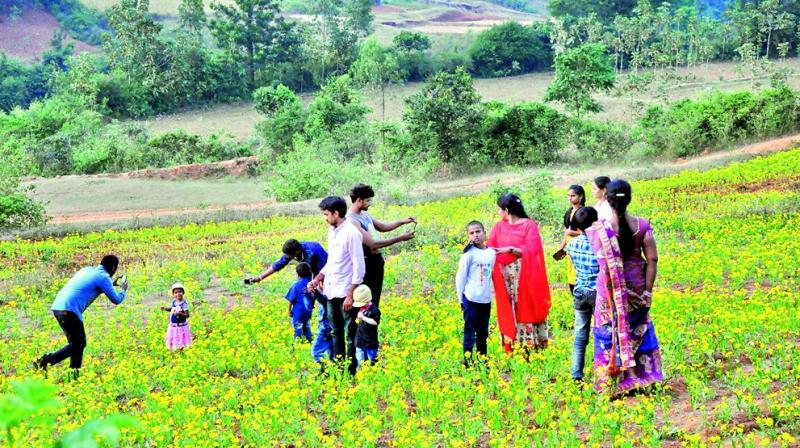Araku fields give way to parasitic plants

Visakhapatnam: The yellowish Niger flower (Valisilu), one of the most preferred backdrops for tourists to take snaps in the picturesque Araku Valley in Vizag Agency is gradually disappearing as a majority of the farmers in tribal pockets are moving on from this oil seed crop to other crops. Sustained losses due to a parasite are being blamed for the situation.
Niger — botanical name Guizotia abyssinica — is an erect, stout, branched annual herb, grown for its edible oil and seed. Niger oil seeds are widely used for manufacturing of cosmetics and also paintings in the country.
The golden yellow plant flowers in winter season in Araku, Paderu and a few other areas in Vizag Agency and is the major attraction, drawing visitors from all parts of the country. However, the area under cultivation of Niger has declined to 10,000 acres in Vizag from over 20,000 acres as one root parasite called as Cuscuta (Dodder) in local parlance Bangarutiga or Jalendri has taken its toll.
“Bangarutiga has destroyed our hopes on high yield of Niger. For past few years, the crop has suffered due to the attack by the parasitic weed. Now, I am growing millets instead of the Niger as I wasn’t able to find the best way to kill Pangarutiga and protect the crop,” says Pangi Ande, a tribal farmer from Balyaguda area under Dumbriguda mandal in Vizag Agency.
The extent of Niger is around 40,000 acres in Andhra Pradesh and over 15,000 acres in Vizag and Vizianagaram districts. Due to various factors, particularly attack by the root parasite, now the area has been shrinking in Vizag region, says S.N. Sudhakar Babu, principal scientist of Hyderabad-based Indian Institute of Oilseeds Research (IIOR) of ICAR.
The average yield is 1.6 quintals per acre in Vizag region and the potential yield is around 3-4 quintals in hilly areas, depending upon rain and other factors.

